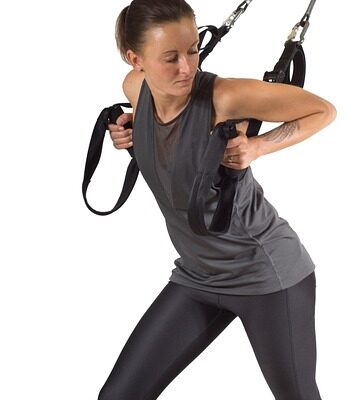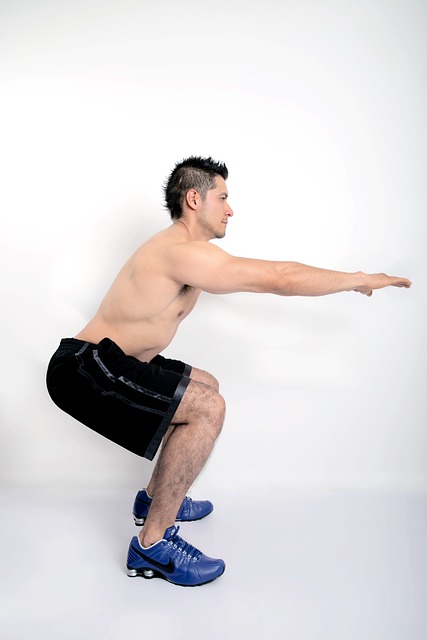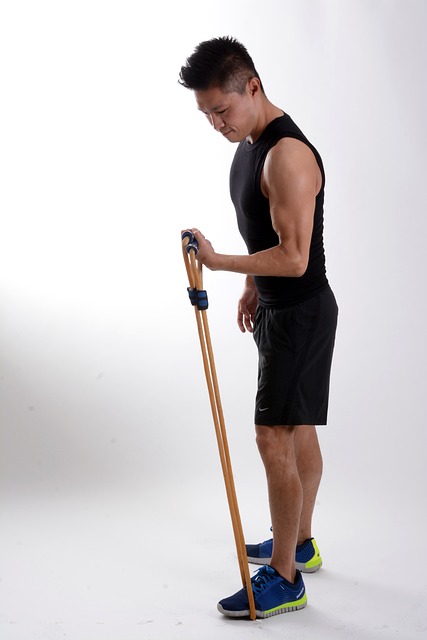Isometric exercises are movements that involve the contraction of an isometric muscle. Muscle contraction can be classified into three types:
- Concentric
- Eccentric
- Isometric
The muscle shortens as it works in a concentric movement, similar to the curling phase of a biceps curl. In contrast, an eccentric motion, such as the lowering part of a biceps curl, lengthens the muscles as it works.
An isometric workout, on the other hand, demands you to exert muscle force without moving. In other words, you must maintain the contraction without moving the joint. Isometric contractions are classified into two types: those that demand you to hold a position isometrically and those that require you to push isometrically.
When you isometrically contract a muscle, you do not move your limbs or lengthen or shorten your muscle fibers; the joint remains static. Even if you’re not moving a muscle over its full range of motion, the fibers are still active and firing in reaction to the resistance.
The wall sit is a superb example of an isometric exercise. After squatting, keep the isometric stance for 30 to 60 seconds before standing up.
Isometric contractions are also used in everyday tasks. For example, if you hold two or three hefty textbooks in front of you, the weight of the books pulls downward. Instead of lettting the books fast, your hands and arms resist the downward motion with equal intensity. The biceps muscles can now contract isometrically.
The Advantages of Isometric Exercises
Isometric exercises can help you build muscles, aid in injury rehabilitation, and perhaps avoid future injuries by including them in your entire workout program.
Concentrate on certain muscle groups: If you need to isolate a certain muscle group, such as the quadriceps, an isometric action allows you to contract a specific muscle or muscle group.
For resistance, use your body weight and a stable surface: Isometric motions, unlike machine workouts, just require body weight, a firm surface to press against, and enough room to do the exercise. But you can add resistance by using dumbbells, barbells, or bands.
Beneficial for damage recovery: Isometric workouts help you gain strength without putting strain on your joints. As a result, isometric exercises are frequently prescribed as part of an injury recovery regimen.
Certain sports and activities may benefit from it: Static muscle strength is required for a range of sports, athletic activities, and fitness classes. Isometric or static muscle contraction is used in sports such as rock climbing, gymnastics, Judo, yoga, and Pilates. Furthermore, sports and hobbies such as biking and golf necessitate grip strength, which is an isometric contraction.
While there are certain advantages to completing isometric exercises, there are a few drawbacks to be aware of before including them in your workouts.
Restriction of range of motion: Isometric workouts do not demand muscles to function in a concentrically or eccentrically directed manner. As a result, you will not gain strength over the complete range of motion.
It is possible that it will not be effective for entire body conditioning: Because isometric exercises are performed in a single position, you lose the opportunity to engage multiple muscle groups at the same time. You will need to perform many exercises if you wish to train more than one muscle group.
Isometric Exercises: How to Do Them
Depending on the activity, you may need to hold the contraction using a wall, the floor, or another sort of resistance. The idea is to locate something stable against which to push.
To exercise the chest muscles isometrically, for example, while the chest muscles contract, press your hands together and hold this position for 10 – 30 seconds.
You can also perform a push-up. After you lower your chest to the floor, you can hold this position for 10 – 30 seconds.
When you use a dumbbell, barbell, or exercise band, the resistance becomes the item you’re gripping.
When performing an isometric biceps curl with an exercise band, for example, you will begin with your arms completely extended and at your sides.
Next, concentrically flex your biceps to bend your elbows to 90 degrees and your forearms parallel to the floor. Hold for 15 to 30 seconds before lowering your arms.
To get the most of isometrics, you must squeeze or contract the muscle you’re working on. If you’re squeezing your hands together to isolate the chest muscles, you should squeeze them together rather than simply placing them palm to palm.
And just because you’re squeezing or holding a contraction doesn’t imply you have to hold your breath as well. When performing isometric exercises, you must still breathe as if you were conducting a full-range-of-motion activity.
Isometric Workout Examples
Start by including one or two isometric movements into your general training program that just demand body weight and a stable surface as resistance. Here are seven steps to get you started:
Wall sits primarily engage the quadriceps, glutes, and calf muscles. The hamstrings are less important.
- Plank hold: This exercise works the abdominals and other core muscles. The glutes, shoulders, and arms are also recruited.
- Side plank: A version of the standard plank that targets the obliques, glutes, and shoulders.
- Glute bridge: This exercise works the glutes, abdominals, and hamstrings.
- Calf lift hold: This exercise develops the calf muscles (gastrocnemius and soleus).
- Hollow body hold: This exercise works the abdominals, quads, hips, and adductor muscles.
The Hundred in Pilates is a classic mat exercise that stimulates the abdominal muscles while also stabilizing the shoulder blades.
Many exercises can also be converted into isometric motions by maintaining the position rather than executing multiple repetitions.
A bodyweight squat, for example, can be converted to an isometric squat by simply holding the bottom or squat posture for 30 to 60 seconds. Similarly, a forward lunge in the 90-degree position can be held for 30 to 60 seconds.
To Conclude
Isometric exercises can be included in a variety of training and rehabilitation programs.
In general, they need little room and no equipment and are simple to do in a variety of circumstances.
Although isometric exercises are generally easy on the joints, if you have an existing injury or are suffering discomfort in a specific section of your body, it’s a good idea to consult with your doctor or a physical therapist before beginning an exercise program that includes isometric exercises.


